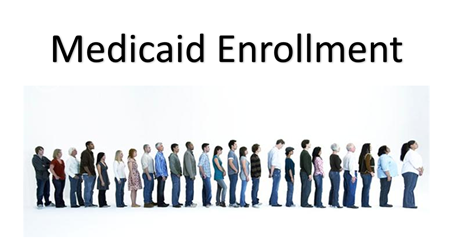MM Curator summary
COVID and unemployment drove most of the 5.6% increase in the Medicaid rolls seen from July 2019 to July 2020. Early talks of a Medicaid bailout via an additional FMAP increase have begun.
The article below has been highlighted and summarized by our research team. It is provided here for member convenience as part of our Curator service.
Clipped from: https://www.modernhealthcare.com/medicaid/medicaid-and-chip-enrollment-grew-56-last-year
Enrollment in Medicaid and the Children’s Health Insurance Program increased by 5.6% from July 2019 to July 2020, according to the Medicaid and CHIP Payment and Access Commission on Wednesday.
The expert panel said the economic fallout of the COVID-19 pandemic drove most of the increase. All states saw their Medicaid rolls grow except Montana and the District of Columbia, ranging from 0.2% in South Carolina to 30.2% in Idaho, which expanded its Medicaid program in 2020.
“The COVID-19 pandemic and related unemployment have major implications for Medicaid and CHIP,” MACPAC Chair Melanie Bella said in a statement.
The Families First Coronavirus Response Act temporarily raised Medicaid’s federal matching percentage—FMAP—by 6.2% until the public health emergency ends, granting states some much-needed fiscal relief. But states can’t curb eligibility, disenroll beneficiaries or raise premiums if they want the additional federal money. They also must cover all COVID-19 testing and treatment costs and can’t force local governments to pay a higher share of the state’s nonfederal Medicaid spending.
With Medicaid enrollment on the rise and tax revenue slipping thanks to the pandemic, many states are slashing their Medicaid spending to balance their budgets. They’re increasingly turning to provider rate cuts to make the numbers work. Experts say another FMAP increase could protect beneficiaries’ access to care by enabling safety-net providers to keep their doors open. But Congress seems unlikely to boost the federal match for Medicaid anytime soon.
According to MACPAC, Medicaid accounted for 9.2% of the federal budget in 2019. Medicaid and MACPAC accounted for 16.9% of national health expenditures in 2020.
More than 40% of people enrolled in Medicaid and CHIP in 2018 had family incomes less than 100% of the federal poverty, according to new MACPAC data. Enrollees were more likely to have fair or poor health than people with private coverage or no insurance.
In addition, drug rebates lowered gross drug spending by more than half in 2019. Medicaid managed care plans made up over 63% of Medicaid’s gross spending on drugs.

